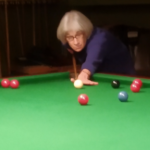(Posted on behalf of Diana Day)
Author: Pauline
Jubilee Weekend Events June 2-5 2022

Here is the list of Dallington events taking place over the Jubilee Weekend. These can also be found on the main Jubilee 2022 page for reference. Any updates will be posted here (you can also sign up for email alerts for all village news items and announcements) .
Thursday 2 June Platinum Jubilee Beacons 7.30-10.00pm Dallington Recreation Ground

This is is the first community event of the national four-day Jubilee Weekend. All local residents are invited to join the opening of festivities with a special evening event at the Dallington Recreation Ground from 7.30pm to share a barbecue.
![]()
Then, along with hundreds of beacons around the country, the Dallington Beacon will be lit at 9.45pm.(You can find out more about the national beacon events at https://www.queensjubileebeacons.com/ )
Saturday 4th June “Dallington Celebrates” 10 am – 4pm
Dallington Old School Village Hall
 On Saturday 4 June, Dallington Old School Village Hall will host an exhibition “Dallington Celebrates” alongside the monthly community Library Café which will be open until 4pm on this day. Come and see a display of historic photographs and souvenirs from village events over the past seventy years, share your own stories and memories and enjoy delicious home made cakes. Refreshments will be served throughout the day. Please get in touch if you have any photographs to share, particularly from previous Jubilee events.
On Saturday 4 June, Dallington Old School Village Hall will host an exhibition “Dallington Celebrates” alongside the monthly community Library Café which will be open until 4pm on this day. Come and see a display of historic photographs and souvenirs from village events over the past seventy years, share your own stories and memories and enjoy delicious home made cakes. Refreshments will be served throughout the day. Please get in touch if you have any photographs to share, particularly from previous Jubilee events.
 We will also be inviting visitors to view the newly refurbished Billiards Room, take part in a fun competition (“How many snooker balls can you pot in 5 minutes?”) and find out how to book the room to play with your friends.
We will also be inviting visitors to view the newly refurbished Billiards Room, take part in a fun competition (“How many snooker balls can you pot in 5 minutes?”) and find out how to book the room to play with your friends.
Sunday 5th June St Giles Church 11am
Jubilee Thanksgiving Service and Songs of Praise
 Congregation-led Service of Thanksgiving and Songs of Praise, followed by celebratory refreshments
Congregation-led Service of Thanksgiving and Songs of Praise, followed by celebratory refreshments
Sunday 5th June 3-6pm Picnic Fun & Games
Dallington Recreation Ground
 A village celebration and get together – everyone is welcome. Bring your own picnic and share the fun with friends and family. There will be games and we hope a village photograph of all present via a drone – a wonderful opportunity to record more memories of the people living here today.
A village celebration and get together – everyone is welcome. Bring your own picnic and share the fun with friends and family. There will be games and we hope a village photograph of all present via a drone – a wonderful opportunity to record more memories of the people living here today.
The last time we had an all village photograph was during the Millennium Celebrations (a copy of this will be included in the display hall display on Saturday
St Giles Services May 2022
- Sunday 1st 11am. Service of The Word
- Sunday 8th 6.30pm. Evensong
- Sunday 15th 11am. Holy Communion
- Sunday 22nd 9.30am. Holy Communion
- Thursday 26th 7.30pm. Ascension Day Service
- Sunday 29th. 11am. Service of The Word
Reminder – Library Cafe Saturday 5th March
Just a quick reminder that the next monthly Saturday library cafe is this Saturday March 5th 10am-12noon. As well as the usual refreshments and books, we hope to include a regular “Gardeners Table” with informal seed swap this month and plant swaps and sales in future months.
Dog harness found in Dallington Forest
Message from Doug Edworthy “Dog harness seen left on a bench in Dallington Forest, on footpath from Glaziers Forge track over the footbridge. Contact Treewarden if not sure of location. 0771090925 treewarden@dallington.org.uk“
St Giles Services March 2022
- Sunday 6th. 11am. Service of The Word
- Sunday 13th. 6.30pm. Evensong
- Sunday 20th. 11am. Holy Communion
- Sunday. 27th. 9.30am. Holy Communion
At a special service on February 6th we gave thanks for the 70 years of the reign of the Queen. The congregation took part in readings and reminisces. Afterwards, the Loyal Toast, “Her Majesty The Queen” and we shared celebratory refreshments.
Lent Lunch. St. Giles Dallington
On Saturday March 12th we will be serving a Lent Lunch.
Midday – 2pm in the church.
For more information please call/text Jane on 07766 434847.
Village Hall Events February 2022
Apologies for late posting for this month’s events in the hall, and a particular reminder for tomorrow’s Saturday morning library cafe – don’t miss the bacon sandwiches!
- Saturday 5th February (& first Saturday of every month) Library Cafe 10-12
- Monday 7th February and every Monday
-
- Art Club 10-12
- Library Cafe 2-4pm
-
- Every Friday: Chair Yoga 11-12 (email charlotte@living-yoga.co.uk if you are interesting in joining the next series of sessions )
- Friday 25th February Quiz Night 7.00 for a 7.30 start. Tickets £5 per head (on the door or book in advance) to include light buffet refreshments. Please bring your own drinks.
To book tickets in advance or for further information contact Bobbie Steel or Jane Messer (07766434847)
Sunday February 6th Celebration Platinum Jubilee
(Posted on behalf of Bobbie Steel)
Celebration of the 70 years of the reign of Her Majesty the Queen.
This coming Sunday, February 6th at 11am there will be a service in St. Giles Church to celebrate the Platinum Jubilee of our Queen.
There will be no member of the clergy present, members of the congregation will contribute readings and reminiscences
After the service there will be celebratory refreshments.
Do come and take part on this very special day.
Village Hall Events January 2022
Here is the provisional list of Village Hall events in January – though this may be subject to change if the government announces further Covid restrictions. Please look out for further announcements
Please also note that due to Bank Holidays some of our regular activities will start in the second week of the month.
Saturday 8th December (& first Saturday of every month) Library Cafe 10-12
Monday 10th January and every Monday
Art Club 10-12
Library Cafe 2-4pm
Every Friday Chair Yoga 11-12
(email charlotte@living-yoga.co.uk if you are interesting in joining in January )
Thursday 27th Dallington Old School AGM 7.00 pm All residents welcome
Bulb planting at the triangle
 On a cold and sleety morning four parish councillors (Nicky Holyoake, Jim Gray, Nick Harding and Pauline Ridley) met up at the triangle at the top of The Street to strim the grass and plant a selection of spring bulbs. We will be carrying out more work over the next few months and adding more planting to improve the appearance of the triangle.
On a cold and sleety morning four parish councillors (Nicky Holyoake, Jim Gray, Nick Harding and Pauline Ridley) met up at the triangle at the top of The Street to strim the grass and plant a selection of spring bulbs. We will be carrying out more work over the next few months and adding more planting to improve the appearance of the triangle.
